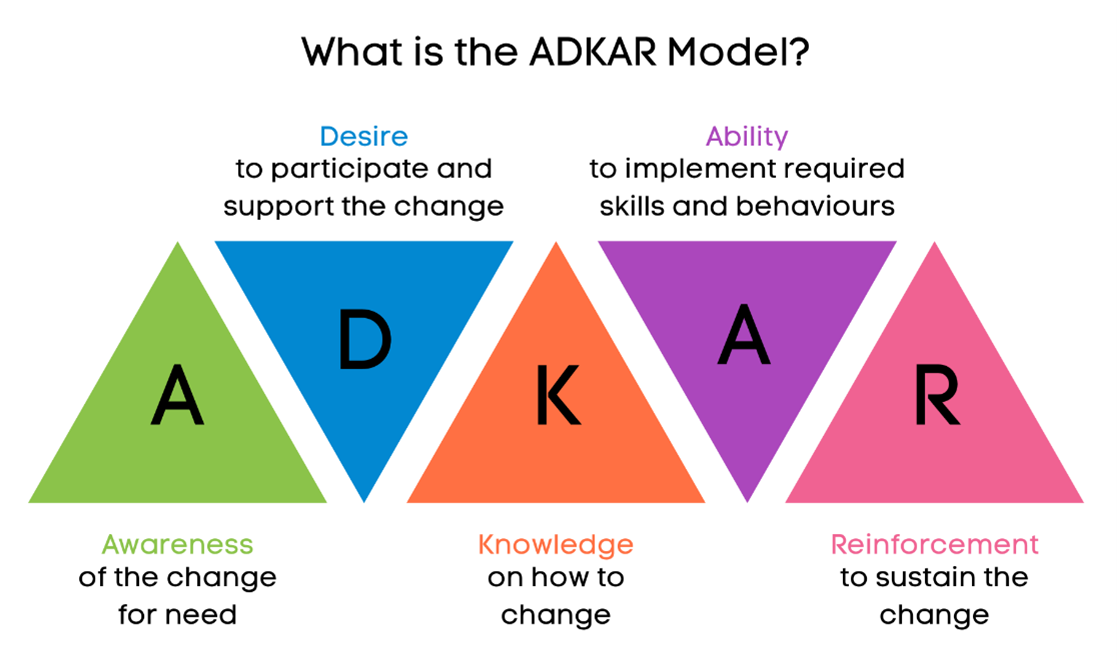Driving Organisational Transformation in the Digital Age
Introduction
Digital transformation is no longer optional, it is essential. Whether it is implementing cloud-based systems or automating workflows, businesses are under increasing pressure to modernise. But investing in new technologies does not guarantee success. Many transformation programmes stall or under-deliver because they overlook the most critical element - people.
With over 70% of digital transformation initiatives failing to meet their goals due to resistance from employees, in this blog we explore the human side of transformation [1]. At Deecon, we work with public and private sector clients to manage change adoption effectively. We use models like ADKAR, which is described in detail below, to guide digital change and focus on aligning procurement, delivery and people strategies.
Continuous Change
In an increasingly hybrid world driven by AI and automation, change is no longer sporadic, it’s continuous [2]. Our clients are constantly navigating new regulations, changing customer expectations and technological innovation, that outpaces traditional governance.
For example, the public sector faces challenges to deliver services with fewer resources and to modernise outdated systems, all whilst driving taxpayer value for money. Whether public or private sector, sustainable change must be people-led [3].
ADKAR: A Model for Change Adoption
To facilitate change for our clients that lasts, Jeff Hiatt’s ADKAR model offers a simple framework to guide people through the change process [4].
These principles help us to bring users on the change journey right from the beginning to maximise buy-in and success. If users are aware of why the change is happening, want the change to happen, and know how to use it, the transformation is far more likely to land, and more importantly, to last.
Most Common Pitfalls
In our experience, digital transformation can fail when:
End users are brought in too late
When teams are only consulted post-implementation, resistance is higher and technology adoption is slower
Transformation success is measured too soon
Go-live is not the finish line, it is the beginning of the embedding period that needs support, reinforcement, and feedback loops
There’s too much focus on the system, not enough on behaviours
New tools often replicate old processes. To unlock real value, users need support and encouragement to evolve how they work
Change adoption cannot be treated as an add-on. We design our programmes with people at the centre from day one.
Conclusion: Don’t Forget the People
Digital transformation is not just about what you buy, it is about your people. If your teams do not understand, support, or know how to implement change, even the most sophisticated tools will falter.
If you are planning a transformation or struggling to embed a recent one, Deecon can help. We combine expertise in technology implementation and change management to help our clients deliver lasting and impactful transformation.
References
[1] Forbes – Why transformation fails
[2] Forbes – Change Is Inevitable
[3] UK Government Digital Strategy (June 2022)
Words by Connor Ovenstone
Edited by Anna Pringle


